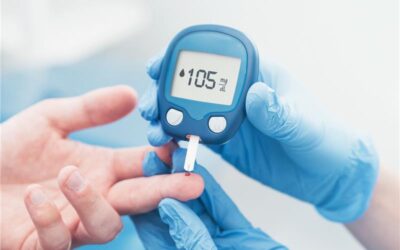An Intervention for Type 2 Diabetes
High physical activity leads to metabolic changes that prevent type 2 diabetes.
This study’s results provide a detailed resource regarding the metabolic architecture of physical activity in humans and pinpoint specific pathways that are prognostically relevant. This offers novel avenues for future type 2 diabetes mechanistic investigation and intervention.
This study’s results provide a detailed resource regarding the metabolic architecture of physical activity in humans and pinpoint specific pathways that are prognostically relevant. This offers novel avenues for future type 2 diabetes mechanistic investigation and intervention.

The Challenge: Physical Activity and Diabetes
Diabetes is among the top ten causes of death worldwide. Previous studies have shown that physical activity can prevent type 2 diabetes in individuals with a high risk of this disease.1 Consequently, harnessing the power of physical activity as a therapeutic tool could have far-reaching preventive health impacts. As with many areas in population health, the association between physical activity and type 2 diabetes is well documented; however, the mechanisms involved and their complex interactions are not yet fully elucidated. Studies that dissect the molecular changes related to physical activity will improve our understanding of how physical activity works as an intervention. Metabolomics offers a promising approach to exploring this relationship.
The Metabolon Insight: Metabolic Changes Related to Physical Activity
Metabolon helped investigate the association between the metabolite signature of physical activity and the risk for type 2 diabetes.2 The Metabolon Global Discovery Panel was used to analyze plasma samples from 7,271 male participants.
The Solution: Metabolomics Elucidates the Link Between Physical Activity and Diabetes
The current study demonstrated that increased physical activity is associated with a lower incidence of type 2 diabetes, increased insulin sensitivity, and insulin secretion. The group also found that an increase in physical activity leading up to a follow-up exam decreased glucose levels, increased insulin sensitivity, and insulin secretion compared to participants who did not increase their physical activity levels. On the other hand, participants who reduced their physical activity had a significant increase in their glucose levels and a decrease in their insulin sensitivity, and insulin secretion compared to those who did not change their physical activity.
Metabolomics can contribute significantly to the understanding of the effects of physical activity on metabolic pathways associated with the risk of type 2 diabetes. Using the Global Discovery Panel, the present study found 198 metabolites significantly associated with high physical activity. Glycerophospholipids (28%), amino acids (15%), and glycerolipids (8%) were the most common metabolite groups associated with an increase in physical activity. Increased physical activity was significantly associated with high levels of choline plasmalogens, lysophosphatidylcholines, polyunsaturated fatty acids (PUFAs), carotenoids, long-chain acylcarnitines, imidazoles, bilirubins, aryl sulfates, hydroxy acids, indolepropionate, and indolelactate. Some of these metabolites have previously been associated with a decreased risk for type 2 diabetes and a healthy diet. This study suggests that the metabolite profile of increased physical activity includes multiple metabolic pathways that are associated with a healthy lifestyle.
The Outcome: Revealing Molecular Pathways that are Prognostically Relevant
This study’s results provide a detailed resource regarding the metabolic architecture of physical activity in humans and pinpoint specific pathways that are prognostically relevant. This offers novel avenues for future type 2 diabetes mechanistic investigation and intervention. Furthermore, it provides the potential for the identification of clinically useful biomarkers. Future studies could provide a comprehensive overview of changes in metabolite pathways dependent on different types of physical activity. Clinicians can potentially use findings from such studies to titrate exercise regimens based on individually tailored diabetes outcomes. These individualized exercise regimens can be prescribed even to healthy individuals, reducing the burden of type 2 diabetes in healthcare systems worldwide.
References
1. Merlotti, C.; Morabito, A.; Pontiroli, A.E. Prevention of type 2 diabetes; a systematic review and meta-analysis of different intervention strategies. Diabetes Obes. Metab. 2014, 16, 719–727. doi.org/10.1111/dom.12270
2. Kemppainen SM, Fernandez-Silva L, Lankinen MA, Schwab U, and Laakso M. Metabolite Signature of Physical Activity and the Risk of Type 2 Diabetes in 7271 Men. Metabolites. 2022;12(1):69. doi: 10.3390/metabo12010069.






